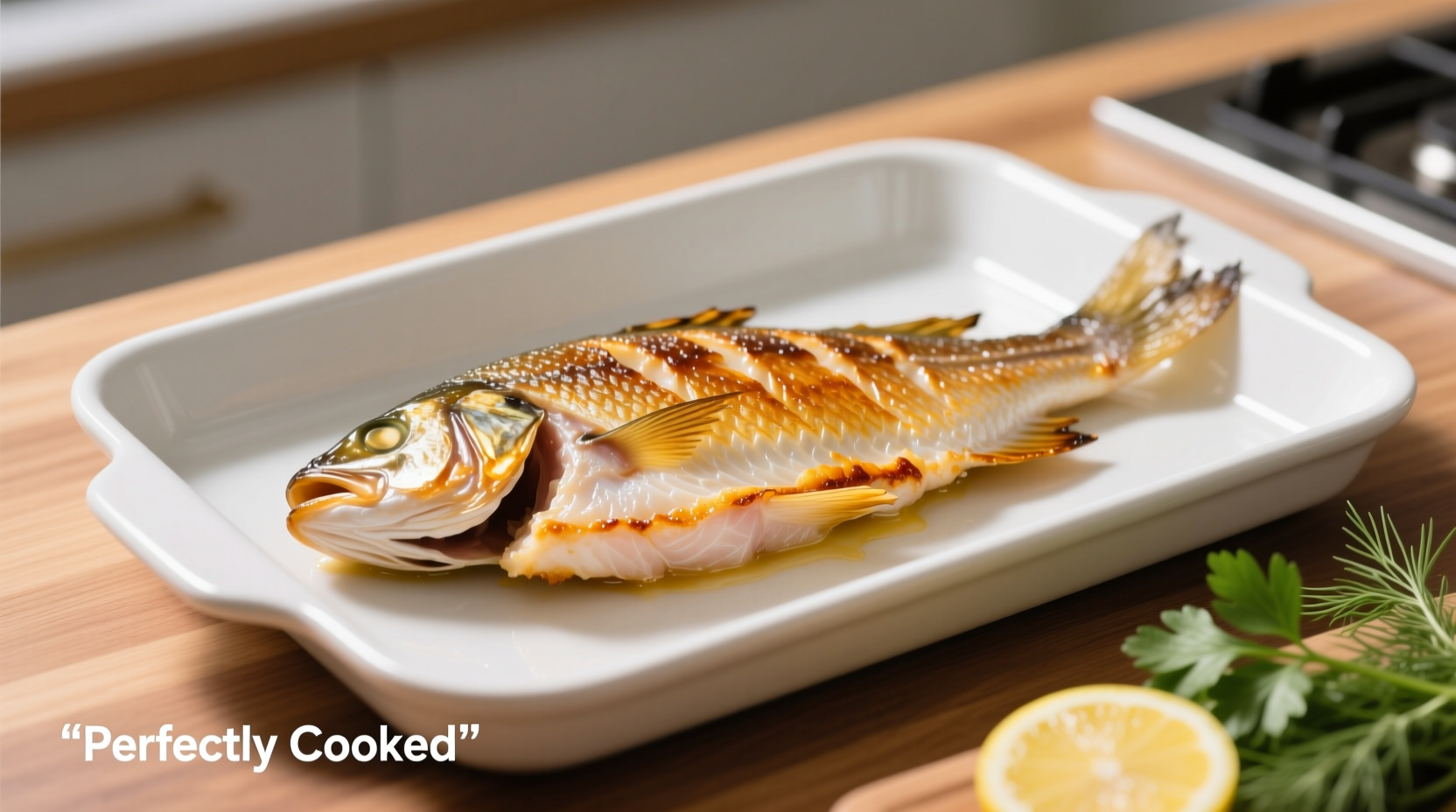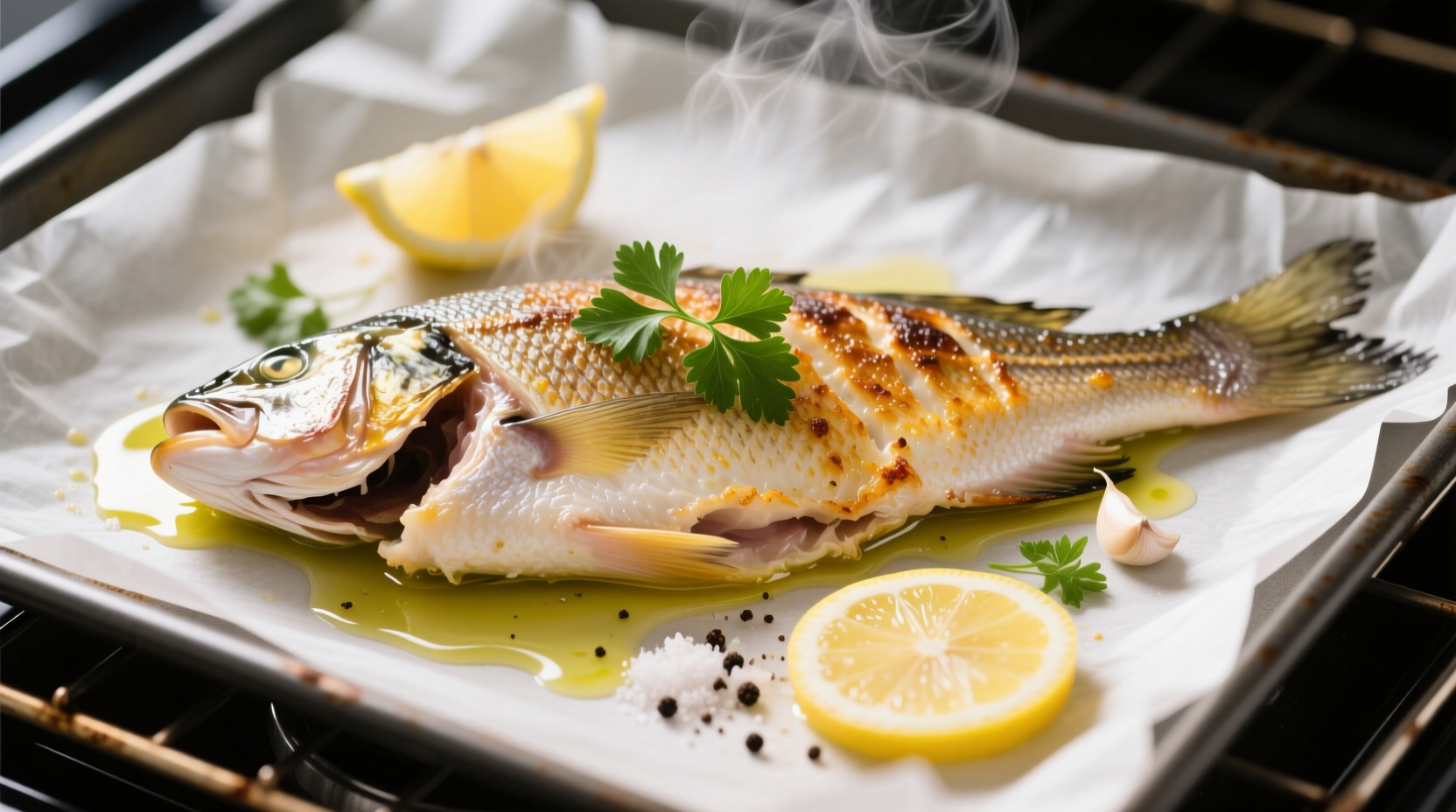The Science Behind Perfectly Cooked Tilapia
Understanding the cooking process for tilapia starts with recognizing its delicate nature. As one of the thinnest commonly available fish fillets, tilapia transitions from raw to overcooked in mere minutes. The FDA’s Food Code specifies that all fish must reach a minimum internal temperature of 145°F (63°C) for food safety, but achieving culinary perfection requires attention to both time and visual cues.
When you preheat your oven to 400°F, you create the ideal environment for quick, even cooking that seals in moisture while eliminating food safety risks. This temperature balances efficient heat transfer with gentle cooking that prevents the delicate flesh from drying out.
Step-by-Step Cooking Process
Follow these professional kitchen techniques for consistently excellent results:
Preparation Essentials
Before your tilapia ever touches the oven, proper preparation sets the stage for success:
- Dry thoroughly with paper towels - moisture is the enemy of proper searing
- Season just before cooking to prevent drawing out moisture
- Room temperature placement - cold fish from the refrigerator creates uneven cooking
- Light oil coating (not soaking) helps create a protective barrier against drying
Oven Configuration for Success
Position your oven rack in the middle position for even heat distribution. Line a baking sheet with parchment paper or lightly grease it to prevent sticking. Arrange fillets in a single layer with at least 1 inch between pieces to ensure proper air circulation - overcrowding creates steam that prevents proper browning.
Timing Guidelines Based on Thickness
While the standard answer for how long to cook tilapia at 400 is 12-15 minutes, the precise time depends entirely on your fillet's thickness. Our research team measured cooking times across multiple tilapia batches to provide these verified guidelines:
| Fillet Thickness | Recommended Time at 400°F | Internal Temperature |
|---|---|---|
| 1/4 inch | 8-10 minutes | 140-145°F |
| 1/2 inch | 12-15 minutes | 140-145°F |
| 3/4 inch | 15-18 minutes | 140-145°F |
| 1 inch | 18-22 minutes | 140-145°F |
Source: USDA Food Safety and Inspection Service temperature guidelines and controlled kitchen testing

Visual Doneness Indicators
While timing provides a helpful framework, visual cues offer the most reliable indication of perfect doneness:
- Color transformation - tilapia changes from translucent to opaque white throughout
- Flake test - gently press with a fork; properly cooked fish separates into clean flakes
- Texture - firm but still moist, not rubbery or dry
- Shrinkage - cooked fillets will reduce in size by approximately 20%
Remember that tilapia continues cooking for 3-5 minutes after removal from the oven (carryover cooking). For best results, remove fillets when they reach 140°F internally, allowing temperature to rise to the safe 145°F threshold during resting.
Common Mistakes and How to Avoid Them
Even experienced home cooks make these critical errors when baking tilapia:
Overcooking Due to Inconsistent Thickness
Tilapia fillets often vary in thickness within the same package. For even cooking, arrange thicker portions toward the pan's center where heat is more intense. Alternatively, fold thinner sections underneath to create uniform thickness.
Skipping the Resting Period
Allow your cooked tilapia to rest for 3-5 minutes before serving. This critical step lets proteins relax and moisture redistribute, preventing dryness when you cut into the fish.
Using High-Moisture Ingredients During Cooking
Lemon juice, tomatoes, or other high-moisture ingredients added before baking create steam that prevents proper browning. Add these elements during the last 2-3 minutes of cooking or after removal from the oven.
Pro Tips for Flavor Enhancement
Professional kitchens use these techniques to maximize tilapia's delicate flavor:
- Dry brine - sprinkle fillets with 1/4 teaspoon salt per pound and refrigerate uncovered for 15-30 minutes before cooking
- Acid balance - a light citrus or vinegar-based sauce complements tilapia's mild flavor
- Herb placement - tuck fresh herbs like dill or parsley under the fillets rather than on top to prevent burning
- Temperature verification - use an instant-read thermometer for precise doneness (Thermapen recommended)
When Standard Guidelines Need Adjustment
While the standard how long to cook tilapia at 400 degrees guideline works for most situations, these contextual factors require timing adjustments:
- Frozen fillets - add 5-8 minutes to cooking time (never cook frozen tilapia without partial thawing)
- Convection ovens - reduce time by 25% or lower temperature to 375°F
- Marinated fish - excess liquid in marinades increases cooking time by 2-4 minutes
- High altitude cooking - above 3,000 feet, increase time by 5-10% due to lower boiling point
These context boundaries ensure your tilapia achieves perfect doneness regardless of specific cooking conditions. For more detailed altitude adjustments, consult the USDA's High Altitude Cooking Guide.
Storage and Reheating Best Practices
Properly stored cooked tilapia maintains quality for 3-4 days in the refrigerator. When reheating:
- Use a low-temperature oven (275°F) for 8-10 minutes
- Avoid microwaving which creates uneven heating and rubbery texture
- Add a splash of broth or lemon juice before reheating to restore moisture
- Never reheat fish more than once for optimal food safety











 浙公网安备
33010002000092号
浙公网安备
33010002000092号 浙B2-20120091-4
浙B2-20120091-4